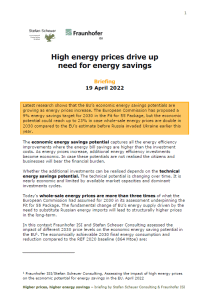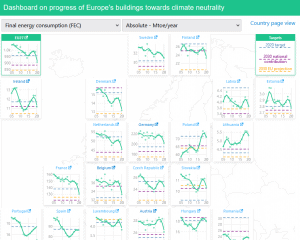The new EU Energy Efficiency Directive – getting stronger
https://www.stefanscheuer.eu/wp-content/themes/osmosis/images/empty/thumbnail.jpg 150 150 Almut Bonhage Almut Bonhage https://secure.gravatar.com/avatar/a3d1000d4d9fc174801655823d6ddab4?s=96&d=mm&r=g
![]()
A new era for energy effciency policies is about to start. On the 10th of March 2023, EU law-makers achieved a deal for the recast of the Energy Efficiency Directive (EED).
The 2030 energy efficiency target has become more ambitious, responding to soaring energy costs and to the war in Europe. But it still falls short of what would make sense from a climate protection and responsible investor perspective.
But most importantly, the EU’s 2030 target has become more focused and comes with a credible governance to reassure investors, businesses and citizens that it is much more serious this time around. Member States have new obligations vis-à-vis the EU target and to put in place energy efficiency measures that will be checked against delivery.
Implementation will have to be very fast to catch up with the cycle of National Energy and Climate Plans. It will require timely delivery by the Commission to work with the new benchmarks and to correct national contributions.
Not all countries are happy with the benchmarks set in the new EED for their national contributions. Those who think they did more in the past than others tend to feel disadvantaged. That was the case with the first EED, the 2018 revision and now again.
With a bit of distance, we hope that the perspective becomes clearer, that national energy saving efforts are not an altruism, but are bottom line services to lower costs for citizens and business and shield national interests from fossil fuel wars.
In a nutshell
- The new EED has increased the 2030 energy efficiency ambition: the EU targets are set at 763 Mtoe final energy consumption and 992,5 Mtoe primary energy consumption, which is 11.7% below the Reference Scenario 2020. However, this remains still well below the cost-effective potential which kept increasing with higher energy prices.
- The governance of the 2030 target for final energy consumption has been significantly strengthened. The binding character of the EU level target is manifested by legal obligations on the European Commission and Member States.
- The EED comes now with a new gap-avoider tool: the Commission has to ensure that national contributions leave no gap to the EU target. In case of low ambition, Member States have to accept and apply a corrected contribution handed over by the Commission. A last-minute addition to the baseline used for the assessment of national contributions causes uncertainties about the functioning of the governance tools. But in our understanding, the impact will be limited.
- Furthermore, a new gap-filler tool is added: the adequacy of national energy efficiency measures will be checked against delivery. Member States have to set an indicative trajectory. If a Member State is above the trajectory, it will be obliged to put in place additional energy efficiency measures.
- The EU’s target for primary energy demand is only indicative and the governance tools do not apply to it. It weakens energy efficiency policies targeting the whole energy system, including generation, storage and transmission.
Consolidated text of the new Energy Efficiency Directive. 24 March 2023

